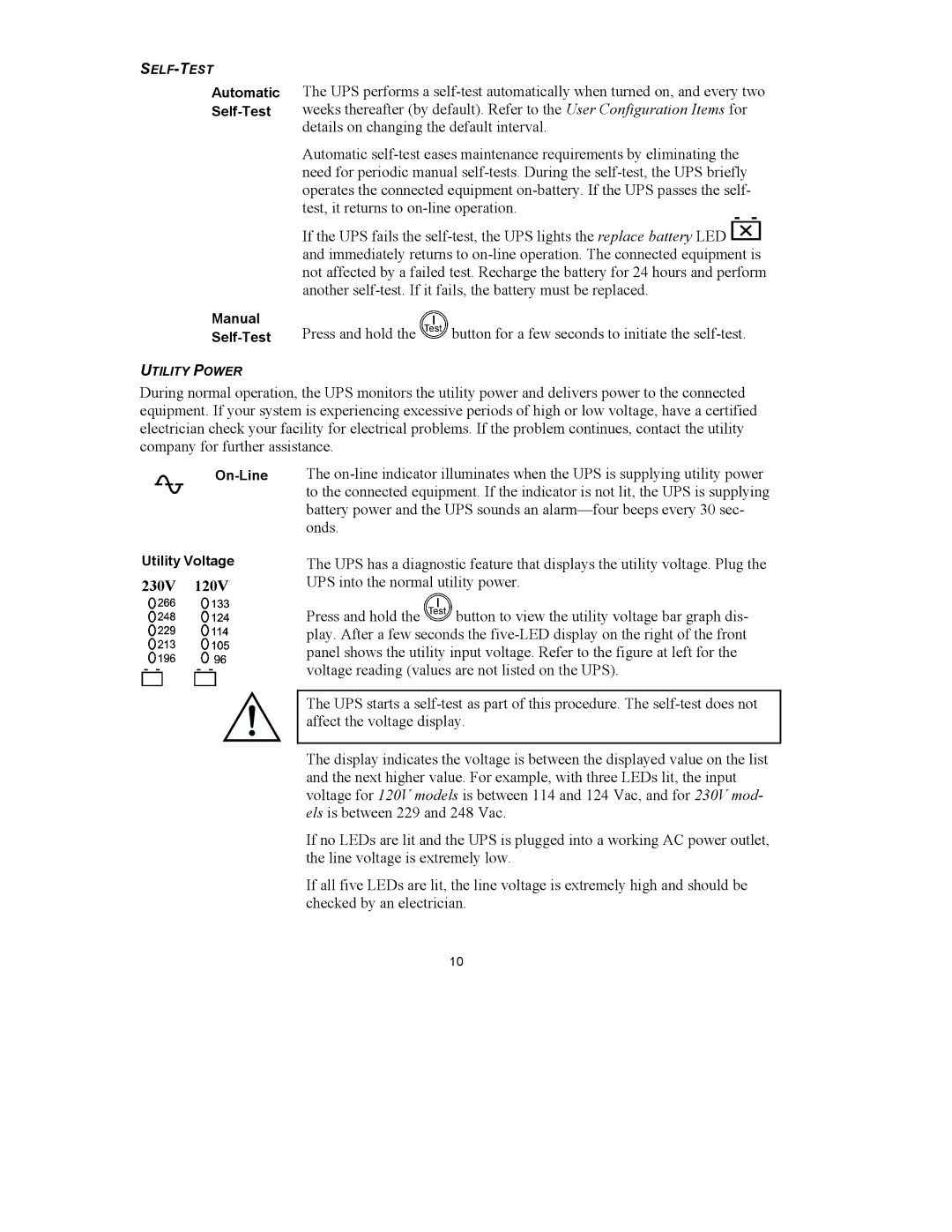
Automatic
Manual
UTILITY POWER
The UPS performs a
Automatic
If the UPS fails the ![]()
and immediately returns to
Press and hold the ![]() button for a few seconds to initiate the
button for a few seconds to initiate the
During normal operation, the UPS monitors the utility power and delivers power to the connected equipment. If your system is experiencing excessive periods of high or low voltage, have a certified electrician check your facility for electrical problems. If the problem continues, contact the utility company for further assistance.
Utility Voltage
230V 120V
The UPS has a diagnostic feature that displays the utility voltage. Plug the UPS into the normal utility power.
Press and hold the ![]() button to view the utility voltage bar graph dis- play. After a few seconds the
button to view the utility voltage bar graph dis- play. After a few seconds the
The UPS starts a
The display indicates the voltage is between the displayed value on the list and the next higher value. For example, with three LEDs lit, the input voltage for 120V models is between 114 and 124 Vac, and for 230V mod- els is between 229 and 248 Vac.
If no LEDs are lit and the UPS is plugged into a working AC power outlet, the line voltage is extremely low.
If all five LEDs are lit, the line voltage is extremely high and should be checked by an electrician.
10
